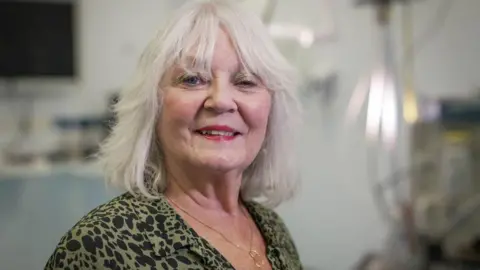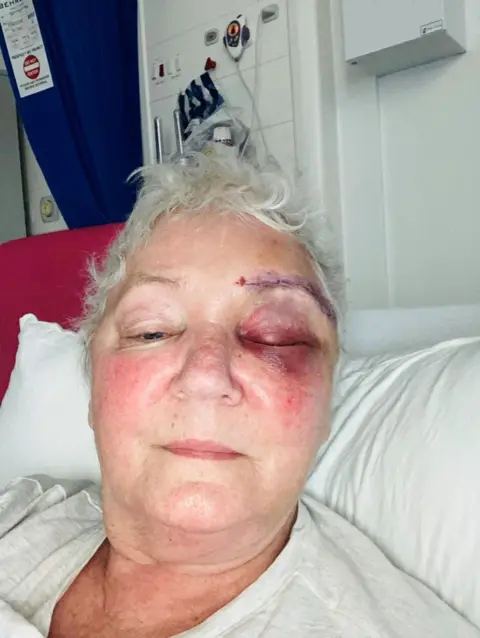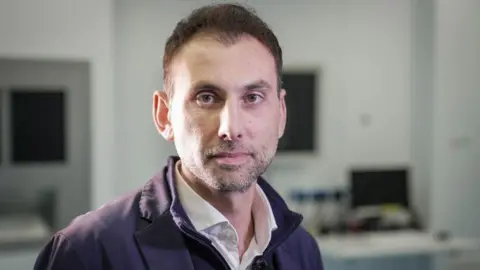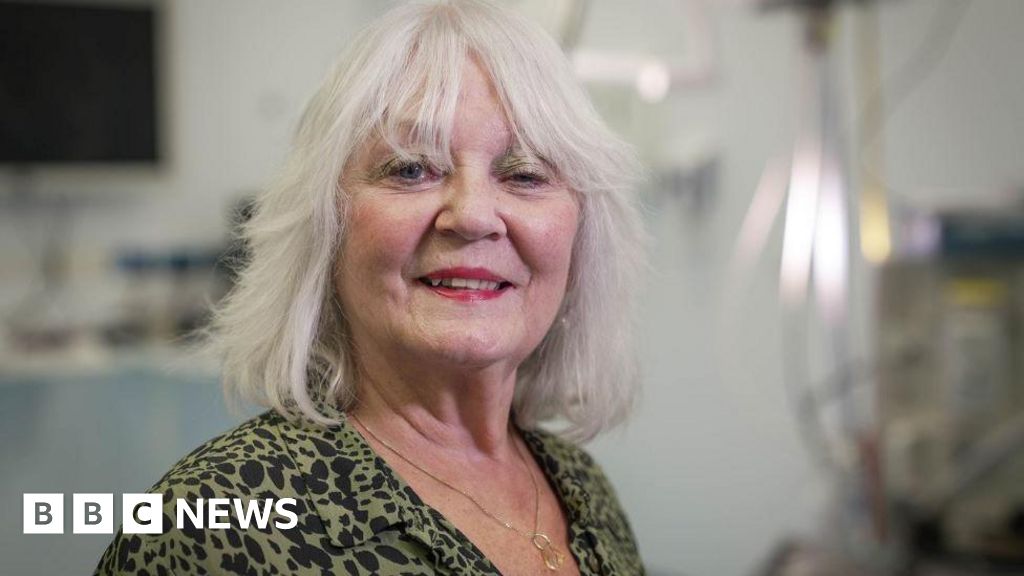 BBC
BBCPioneering surgery to remove large brain tumours through the eyebrows of patients has been successfully carried out in Scotland.
In what has been described as a “world first”, NHS Grampian said tumours the size of large apples have been removed using the technique.
Consultant neurosurgeon Anastasios Giamouriadis has adapted the already-existing eyebrow technique to enable him to now remove larger growths – a development which he described as a “game-changer”.
The surgery is said to have fewer complications, a shorter operating and recovery time, and less scarring as a result. One recipient – who described her tumour as like a tennis ball – said she was out of hospital in just two days with nothing but a black eye.
Traditional surgery for patients with tumours at the front of their brain involves having to remove a large part of the skull, in what is known as a craniotomy.
It is a lengthy, complex process, which can take up to 10 hours, and exposes healthy parts of the brain during the operation.
Known as the Modified Eyebrow Keyhole SupraOrbital Approach for Brain Tumours, the new technique means patients are expected to be left with only a small scar and a black eye.
Some are able to leave hospital just 24 hours later and return to work within days.
 Doreen Adams
Doreen AdamsDoreen Adams, 75, from Aberdeen, previously had a craniotomy to remove a tumour.
She has now had the new surgery, and described the difference as “night and day” between the two procedures.
“You hear of these things, but no – going through your eyebrow? No – you just can’t think,” she told BBC Scotland News.
“My tumour was like a tennis ball – how can you get that out of small here.
“In two days this man – this wonderful young man – is going to give me my life back.
“And that’s exactly what he’s gone and done.”
‘Quite incredible’
She explained: “My recovery from the surgery at Aberdeen Royal Infirmary was much, much quicker.
“I was out of hospital two days later and back to my normal life almost immediately.
“I was out in two days with nothing apart from a black eye.
“To think you can have brain surgery and be back to normal within a few days is quite incredible.
“I’m very grateful to Mr Giamouriadis and NHS Grampian – it’s fantastic that we have this innovative approach and these skills here in the north east.”

Mr Giamouriadis told BBC Scotland News: “I noticed over my career, especially during my training, that even when the operation goes really well without any complications it takes quite a significant time for the patients to recover.”
He said of the new process: “I didn’t invent this type of surgery, but I have modified it to give me more space, through the eyebrows, and it is allowing me to remove very big brain tumours.
“We are not aware of anywhere else in the world that has managed to remove tumours as large as we have.
“We are entering through the eyebrow. It gives us a very limited space but allows us to carry out the surgery more quickly and with less complications.”
‘Huge impact’
He said the operation can be over in as little as three hours.
“Traditionally people would be left with scars across their full forehead, we avoid that with this method,” he explained.
“Normally our patients will go home on the second day with a bruised eye, as expected, which will return back to normal within a few days.
“It makes a huge impact for the patient, for their families, for the society, for the organisation, for the NHS.
“It’s a game-changer.”


